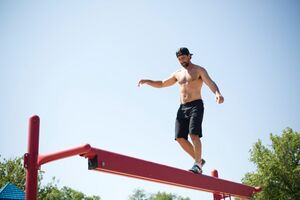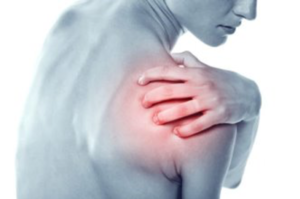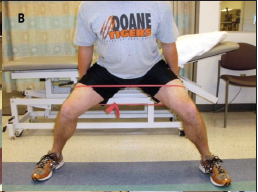Movement Dysfunction
Original Editor - Mariam Hashem
Top Contributors -Lucinda hampton, Mariam Hashem, Kim Jackson and Jess Bell
Introduction[edit | edit source]
A good understanding of the control processes used to maintain stability in functional movements is essential for physiotherapists who treat or manage musculoskeletal pain problems. Movement dysfunction is often related to a person not having control of the stabilising muscles within the muscle system. The majority of chronic pain cases are due to a failure of the stabilisers of the movement system. To effectively treat the problem, one must look outside of the isolated area to assess the function of the entire movement system[1]. As we humans develop our movement system from a genetically predetermined neurodevelopmental process, dysfunctions in the motor system occur in predictable patterns[2].
Movement System Impairment Syndromes[edit | edit source]
Diagnoses and treatments based on movement system impairment (MSI) syndromes were developed by Sahrmann and colleagues to guide physical therapy treatment. The conceptual framework that serves as the basis for the proposed MSI syndromes is the kinesiopathologic model (KPM), ie that repetitive movement and sustained alignments can induce pathology. MSI syndromes are proposed to result from the repetitive use of alignments and movements that over time are proposed to become impaired and eventually induce pathoanatomical changes in tissues and joint structures. [3] [4]
Classification into movement system impairment syndromes and treatment are described for all body regions.
The classification involves interpreting data from standardised tests of alignments and movements.
Treatment is based on correcting the impaired alignment and movement patterns as well as correcting the tissue adaptations associated with the impaired alignment and movement patterns. The causes of these altered patterns include:
- Risk factors: Sustained posture and repetitive movement, both intrinsic (eg characteristics of an individual) and extrinsic factors (eg work, fitness) that can contribute to the degree of tissue changes.
- Development and persistence of the impairment: Combination of micro-instability, relative stiffness, the neuromuscular activation pattern and motor learning.
Assessment: The KPM uses clinical tests to identify the impaired movement within the kinetic chain and optimises interventions that are specific to this dysfunction.
Treatment: Correction of impaired alignments and movement contributing to the tissue dysfunction through addressing presented stiffness, weakness and neuromuscular activation patterns is the proposed treatment for MSI[5].
Steps in MSI[edit | edit source]
The following steps are used to assess and treat MSI:
- Determine the syndrome
- Identify the contributing factors
- Determine the corrective exercises
- Identify the alignments and movements to correct during daily activities
- Educate the patient about factors contributing to the musculoskeletal condition by practicing correction during activities
Functional Muscle Classification[edit | edit source]
When performing an exercise, there are primary movers (mobilisers) and stabiliser muscles. Stabiliser muscles are tasked with stabilising the body and extremities during multiplanar movements, and the primary movers are the muscles doing most of the work.
- The primary mover, also known as the agonist, are the muscles doing the majority of the work in a lift.
- Stabiliser muscles aren’t directly involved in moving the load, they are working to keep certain body parts stable and steady so the primary movers can perform the exercise efficiently, effectively, and safely. They are believed to have postural role and control excessive joint movement. A muscle contracts when it acts as a stabiliser, but it doesn’t significantly lengthen or shorten as the primary movers do. The following tables, based on the work of Comerford and Mottram[1] provide additional information about primary movers and stabilisers.
| Stabiliser Muscles | Mobiliser Muscles |
|---|---|
| Mono-articular | Bi-articular or multi-articular |
| Have segmental attachments | Superficial |
| Deep stabilisers have short levers and small movement arms | Mobiliser muscle have long levers and large moment arms and the largest bulk |
| Superficial stabilisers have broad aponeurotic insertions that enable them to distribute force / load | The lever mechanics encourage speed / range of motion |
| Local Muscles | Global Muscles |
|---|---|
| Local muscle are from the deepest layer and have segmental origins / insertions | Global muscles are from the superficial / outer layer and they do not have segmental vertebral insertions |
| These muscles control / maintain neutral spine | These muscles insert / originate in the thorax or pelvis (non-segmentally) |
| These muscles respond to any change in posture and low extrinsic loads | These muscles respond to changes to the line of action / magnitude of high extrinsic loads |
| They act independently of the direction of load / movement, and are biased for low load activities | They produce large torques which encourage movement |
Stability Complexes[edit | edit source]
Shoulder
- The rotator cuff help stabilise the shoulder (supraspinatus, subscapularis, infraspinatus, teres minor). Their function is crucial to maintaining optimal function and biomechanics of the shoulder joint.
- Scapular stabilisers (serratus anterior, trapezius, rhomboids, levator scapula) cooperate with the rotator cuff and deltoid muscles to upwardly and downwardly rotate the scapular while the shoulder joint and arm is moving overhead, behind the back or reaching away from your core.
Hip
- The hip stabiliser complex is made up of multiple muscles, but the main one is the gluteus medius (maintains proper biomechanical function of the lower body when walking or running).
- It is, of course, not the only muscle working to stabilise the body as it is just one part of the kinetic chain.[6]
Trunk
- The major muscles used for core stability include: Pelvic floor; Transversus abdominis; Internal Obliques; Multifidus; Diaphragm; Some literature also includes the deep fibres of the psoas and the deep hip rotators as part of the inner core. See Core Muscles
Examples of Abnormal Recruitment[edit | edit source]
- Normally, to generate hip extension, hamstrings activate first followed by glutes then contralateral erector spinae. A delayed activation of glutes after hamstrings followed by ipsilateral erector spinae was associated with low back pain
- The normal sequence of muscle recruitment for shoulder abduction is as follows: Deltoids - Contralateral upper trapezius- ipsilateral upper trapezius -lower scapula muscles. This normal sequence was found to be disturbed in painful shoulder and neck[7]
Read more on this page Motor Control Changes and Pain
Classifications of Movement Dysfunction Syndromes[edit | edit source]
Different clinical tests can be utilized to classify movement impairments. The results of these tests indicate the degree of impaired control and should be aimed to reproduce the symptoms.
Screening tests are followed by symptom modifications to correct the alignment, activate inhibited muscles or eliminate excessive movement on a particular joint[5].
Examples of Motor Impaired Syndromes[5]:
- Cervical flexion-rotation
- Thoracic flexion
- Scapular winging
- Lumbar extension
- Hip lateral rotation
- Tibiofemoral hypomobility
- Insufficient ankle dorsiflexion
Management of Movement System Impairment[edit | edit source]
Different management strategies can be used in the treatment of movement impairment. Educating patients on the causes of their symptoms and lifestyle and ergonomic modifications is essential for patient's engagement in the treatment plan[8].
Exercises can be used to teach patients how to use their muscles properly and to increase the kinesthetic awareness[5].
Refer to the following pages to find out more on the treatment of MIS:
- Lumbar Motor Control Training.
- Deep Neck Flexor Stabilisation Protocol.
- Classification Of Low Back Pain Using Shirley Sahrmann’s Movement System Impairments, An Overview Of The Concept
References[edit | edit source]
- ↑ 1.0 1.1 1.2 1.3 Comerford MJ, Mottram SL. Movement and stability dysfunction–contemporary developments. Manual therapy. 2001 Feb 1;6(1):15-26. Available:https://pubmed.ncbi.nlm.nih.gov/11243905/ (accessed 22.4.2022)
- ↑ Dr Brad Cole Functional Assessment and Rehabilitation of the Cervical Spine Available: https://drbradcole.com/functional-assessment-rehabilitation-cervical-spine/(accessed 22.4.2022)
- ↑ Sahrmann S. Movement System Impairment Syndromes of theExtremities, Cervical and Thoracic Spines. Elsevier Health Sci-ences; 2010.2.
- ↑ Musckuloskeletal key Making the Shift From Treating Dysfunction to Treating Sensitivity in Rehabilitation Available:https://musculoskeletalkey.com/making-the-shift-from-treating-dysfunction-to-treating-sensitivity-in-rehabilitation/ (accessed 22.4.2022)
- ↑ 5.0 5.1 5.2 5.3 Sahrmann S, Azevedo DC, Van Dillen L. Diagnosis and treatment of movement system impairment syndromes. Brazilian journal of physical therapy. 2017 Nov 1;21(6):391-9.
- ↑ Set for set Available: What are stabilizers and how to strengthen them.https://www.setforset.com/blogs/news/how-to-strengthen-stabilizer-muscles (accessed 25.4.2022)
- ↑ Comerford MJ, Mottram SL. Movement and stability dysfunction–contemporary developments. Manual therapy. 2001 Feb 1;6(1):15-26.
- ↑ Van Dillen LR, Norton BJ, Sahrmann SA, Evanoff BA, Harris-Hayes M, Holtzman GW, Earley J, Chou I, Strube MJ. Efficacy of classification-specific treatment and adherence on outcomes in people with chronic low back pain. A one-year follow-up, prospective, randomized, controlled clinical trial. Manual therapy. 2016 Aug 1;24:52-64.









